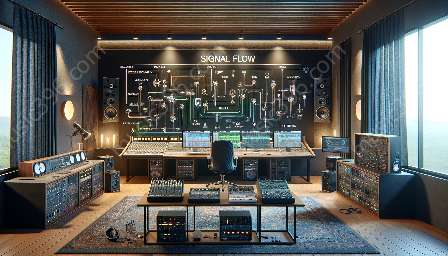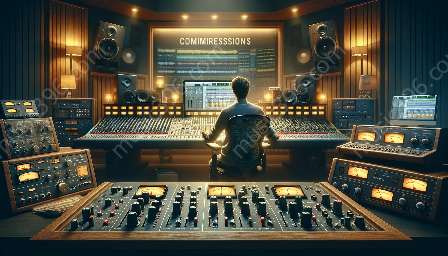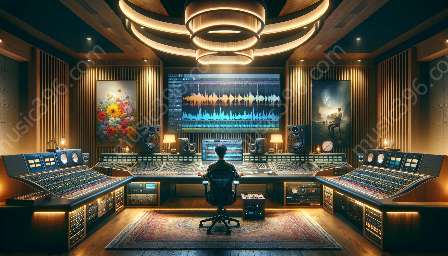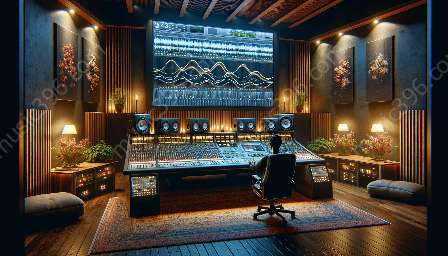In the world of audio engineering, two dynamic processing techniques - multiband compression and dynamic EQ - play crucial roles in shaping the timbre and dynamics of sound. Understanding the differences between them is essential for those working in the realm of audio mixing and mastering. Both multiband compression and dynamic EQ offer unique benefits and drawbacks, and their appropriateness for different scenarios deeply varies. Let's explore the intricacies of these processes and understand their compatibility with mastering and audio mixing.
Multiband Compression: A Powerful Tool in Dynamics Control
Multiband compression is a dynamic processing technique that divides the audio signal into multiple frequency bands, each of which can be compressed independently. This allows for precise control over the dynamic range of specific frequency ranges, which can be extremely beneficial in mastering and audio mixing endeavors.
One of the primary advantages of multiband compression is its ability to address specific frequency imbalances without affecting the overall mix. This makes it an invaluable tool for mastering engineers who need to precisely control the dynamics of different frequency ranges while maintaining the overall sonic balance.
However, the complexity of multiband compression can also pose challenges, as improper use can lead to phase issues, unnatural artifacts, and an overall loss of coherence in the audio signal. It requires a deep understanding of the audio spectrum and solid decision-making skills to apply multiband compression effectively.
Dynamic EQ: A Flexible Approach to Frequency Control
Dynamic EQ, on the other hand, offers a more surgical approach to frequency control by combining the attributes of both equalization and compression. Unlike multiband compression, dynamic EQ processes the audio signal in a frequency-dependent manner, allowing for dynamic adjustments to specific frequency ranges based on the input signal's amplitude.
The versatility of dynamic EQ lies in its ability to dynamically boost or cut specific frequencies based on the input signal's characteristics, making it an ideal tool for addressing specific tonal issues in audio mixing. With dynamic EQ, engineers can target problematic frequencies without affecting the remaining spectrum, which can be particularly useful in achieving a balanced and natural-sounding mix.
However, dynamic EQ also requires a thoughtful and nuanced approach, as aggressive use can result in unnatural tonal shifts and phase discrepancies. It demands a deep understanding of the frequency content and dynamic behavior of the audio material.
Comparing Multiband Compression and Dynamic EQ
When considering the differences between multiband compression and dynamic EQ, one key factor to bear in mind is the nature of the audio material. Multiband compression is well-suited for controlling the dynamic range of individual frequency bands, making it an effective tool for dealing with wide-ranging dynamic imbalances in mastering. Dynamic EQ, on the other hand, excels in addressing specific tonal issues within a mix, providing a more targeted approach to frequency control.
Another crucial factor to consider is the user's familiarity and comfort with each technique. While both multiband compression and dynamic EQ offer powerful capabilities, their intricate nature demands an in-depth understanding of frequency dynamics, making them better suited for experienced engineers who are adept at making critical decisions in audio processing.
Compatibility with Mastering and Audio Mixing
Both multiband compression and dynamic EQ have their unique places in the realms of mastering and audio mixing. Multiband compression shines in mastering applications, where the need for precise control over the dynamics of individual frequency bands is paramount. It allows mastering engineers to address a wide range of dynamic issues in the frequency spectrum without compromising the overall balance and tonality of the mix.
On the other hand, dynamic EQ is a valuable asset in the context of audio mixing, where it can be employed to target specific tonal issues and shape the frequency content of individual tracks within the mix. Its ability to dynamically adjust specific frequencies based on the input signal's characteristics makes it an ideal tool for addressing dynamic tonal imbalances without compromising the natural feel of the audio material.
Conclusion
In conclusion, understanding the differences between multiband compression and dynamic EQ is crucial for audio professionals engaged in mastering and audio mixing. Both techniques offer unique benefits and drawbacks, and their appropriateness for different scenarios deeply varies. By comprehending the intricacies of these dynamic processing tools, engineers can make informed decisions in shaping the sonic characteristics of their audio material, ultimately achieving balanced, impactful mixes and masters.
As you navigate the world of audio engineering and production, keep in mind that the effective use of multiband compression and dynamic EQ requires practical experience, critical listening skills, and an in-depth understanding of frequency dynamics. By honing your abilities in employing these techniques, you can take your audio mixing and mastering to new heights, creating compelling, professional-sounding productions.































